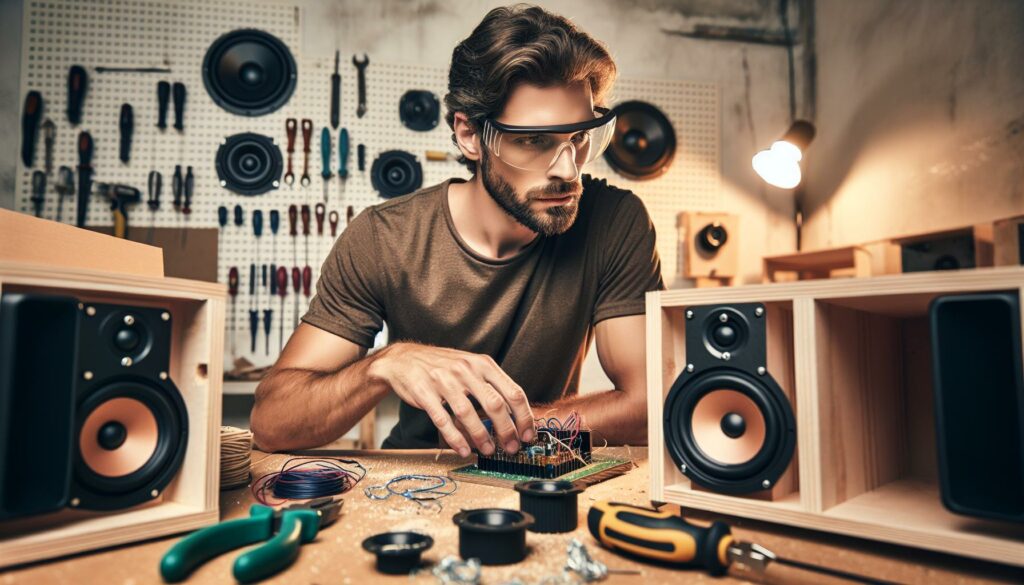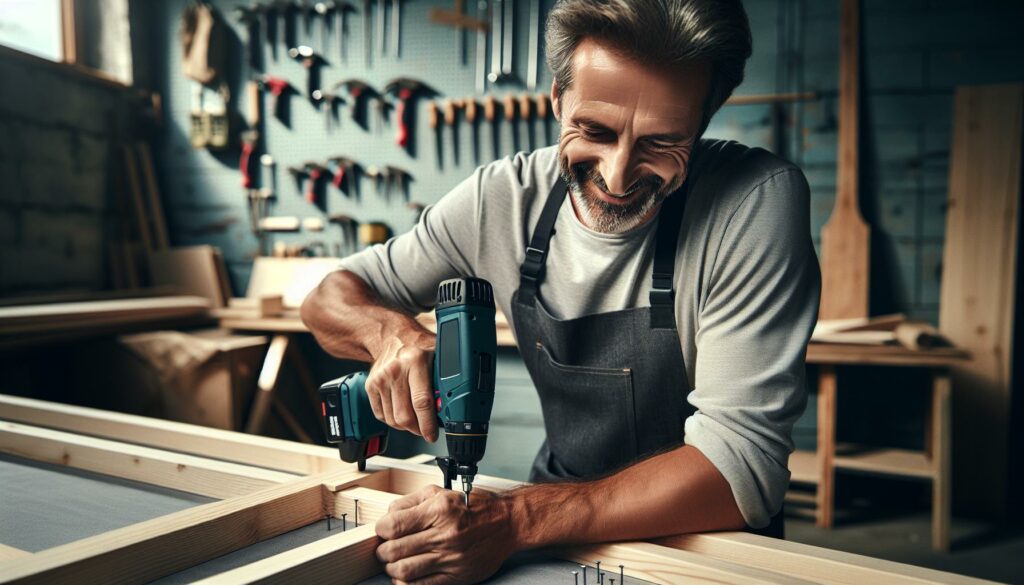If you’ve ever wanted to dive into the world of audio, DIY speaker projects are a fantastic way to start. Not only do they let you unleash your creativity, but they also bring a rewarding sense of accomplishment when you hear your favorite tunes playing through a speaker you built yourself. Whether you’re a seasoned audiophile or just starting out, there’s something truly satisfying about crafting your own sound system.
Key Takeaways
- Engage in Creativity: DIY speaker projects provide a unique outlet for creativity while allowing for personalized audio experiences tailored to individual preferences.
- Understand Speaker Types: Familiarize yourself with passive and active speakers, as they offer distinct advantages in terms of setup and sound quality.
- Essential Tools and Materials: Equip yourself with necessary tools (soldering iron, saws, multimeter) and high-quality components (drivers, enclosures) to ensure a successful build.
- Follow a Clear Process: Utilize a systematic step-by-step guide for designing and assembling your speaker, ensuring precision and attention to detail for optimal sound quality.
- Enhance Sound Quality: Implement tips like choosing quality drivers, optimizing enclosure design, and incorporating acoustic insulation to improve overall audio performance.
- Utilize Online Resources: Leverage online tutorials and community forums for guidance and inspiration throughout your DIY speaker-building journey.
DIY Speaker Projects
DIY speaker projects present a fantastic opportunity for creativity and technical skill development. These projects range from simple designs to complex installations, accommodating various skill levels and preferences.
- Types of Projects: I can explore several types of DIY speaker projects, including portable Bluetooth speakers, home theater systems, and unique designs like vintage-style radios.
- Components: Essential components consist of drivers, enclosures, amplifiers, and wiring. Understanding these elements is crucial for optimizing sound quality.
- Tools and Materials: Common tools include soldering irons, saws, drills, and multimeters. I’ll also need materials such as wood, screws, and acoustic insulation for effective construction.
- Benefits: Crafting my own speakers leads to personalized audio experiences. DIY projects often result in better sound quality and tailored aesthetics, aligning with my specific tastes.
- Resources: Numerous online tutorials and communities offer guidance and inspiration. Websites and forums provide valuable insights, catering to both beginners and seasoned builders.
By engaging in DIY speaker projects, I can enjoy the satisfaction of creating personalized audio solutions while honing my technical skills.
Types of DIY Speakers
DIY speaker projects encompass various types, each offering unique features and benefits. Understanding these categories helps in choosing the right project that matches individual needs and preferences.
Passive Speakers
Passive speakers rely on an external amplifier for power. This type consists of components like speaker drivers and enclosures, but lacks built-in amplification. Builders often create passive designs to achieve specific sound characteristics, using diverse driver types, such as woofers and tweeters, for improved audio quality. Constructing passive speakers enables me to customize components according to my preferences, giving me the flexibility to select the power and sound profile that aligns with my audio taste.
Active Speakers
Active speakers come equipped with built-in amplifiers, allowing me to connect them directly to audio sources without needing additional equipment. These speakers typically include integrated crossovers, which divide audio signals among drivers, optimizing sound output. Constructing active speakers simplifies setup and offers convenience, especially for portable applications. Many designs use a powered Bluetooth module, making it easy to connect to devices wirelessly. This type of speaker serves me well for versatility and ease of use, catering to a wide range of listening environments.
Materials Needed for DIY Speaker Projects
Building a DIY speaker requires specific materials and tools to ensure a successful outcome. Understanding these essentials makes the building process smoother and more enjoyable.
Basic Tools Required
- Soldering Iron: This tool is indispensable for making secure electrical connections.
- Wire Strippers: I use these to remove insulation from wires before soldering.
- Saw: A power saw, like a jigsaw, helps in cutting wood for the enclosure.
- Drill: This tool is necessary for creating holes for mounting speakers and other components.
- Multimeter: I use a multimeter to measure voltage and ensure proper electrical connections.
- Clamps: They help secure pieces while assembling the enclosure.
- Drivers: These are the heart of the speaker, converting electrical signals into sound. Common types include woofers, tweeters, and full-range drivers.
- Enclosures: The design and material of the enclosure influence sound quality. Typical materials include MDF, plywood, and fiberglass.
- Amplifiers: An amplifier is essential for powering the speaker, especially for active speaker projects.
- Crossovers: These components split audio signals into different frequency ranges, directing them to the appropriate drivers.
- Wiring: Quality wire ensures minimal resistance and optimal signal transfer. Use stranded copper wire for flexibility.
- Acoustic Insulation: I add insulation inside the enclosure to reduce sound resonance and improve clarity. Materials like foam or fiberglass work well.
Gathering these materials and tools ensures a successful DIY speaker project, regardless of the design chosen.
Step-by-Step Guide to Building Your First DIY Speaker
Building your first DIY speaker involves a series of manageable steps, from designing to assembling. This guide breaks down each stage for clarity and ease.
Designing Your Speaker
Designing a speaker requires careful consideration of dimensions, materials, and sound requirements. I start by defining the purpose of the speaker, which influences its design. For instance, portable speakers need compact designs, while home theater speakers might prioritize sound quality over size.
- Determine Size and Shape: Calculate the dimensions based on the space available and acoustics.
- Select Drivers: Choose drivers suitable for your design. Woofers enhance bass, while tweeters are essential for high frequencies.
- Choose Enclosure Material: Select materials like MDF or plywood for durability and acoustics. Each material influences sound quality and aesthetics.
- Plan Internal Structure: Design an internal bracing system to reduce vibrations, which can distort sound.
Planning these elements ensures a systematic approach, creating a clear blueprint for the assembly process.
Assembly Process
The assembly process is straightforward, but precision and care ensure a better final product. I follow these steps meticulously:
- Gather Tools and Materials: Assemble all necessary tools and materials identified in the design phase.
- Cut Enclosure Panels: Cut MDF or plywood panels according to your design specifications. Use a saw for accurate measurements.
- Assemble the Enclosure: Secure the panels together using wood glue and screws, ensuring airtight seals to enhance sound quality.
- Install Drivers: Securely mount drivers in their designated positions, ensuring they fit tightly to avoid air leaks.
- Wire Connections: Connect wires from the drivers to the amplifier. Create secure connections using solder or connectors to enhance durability.
- Add Acoustic Insulation: Place acoustic insulation material inside the enclosure to absorb excess sound waves.
- Finish the Enclosure: Paint or veneer the exterior for a polished look. Aesthetic choices can significantly impact the final appearance.
Following these steps leads to a successful assembly, resulting in a customized speaker tailored to personal sound preferences.
Tips for Enhancing Sound Quality
- Choose High-Quality Drivers
Select top-notch drivers. Investing in premium woofers and tweeters significantly impacts sound production and clarity. - Optimize Enclosure Design
Design the enclosure with precision. Use thickness in materials like MDF or plywood for durability and reduced resonance. - Incorporate Acoustic Insulation
Add acoustic insulation inside the enclosure. The insulation minimizes standing waves and enhances overall sound quality. - Utilize Proper Wiring
Use quality wiring with appropriate gauge. This ensures minimal signal loss and maintains audio fidelity. - Position Drivers Strategically
Place drivers according to sound dispersion principles. Positioning them at optimal angles improves sound stage and imaging. - Avoid Resonance
Build the enclosure to avoid resonance. Bracing internal walls or using damping materials reduces unwanted vibrations. - Tune the Crossover Frequency
Set crossover frequencies correctly. A well-tuned crossover allows effective driver coordination and smoother frequency transitions. - Experiment with Placement
Test speaker placement within the room. Positioning effects sound quality, so experiment with different locations for optimal listening. - Select the Right Amplifier
Pair an appropriate amplifier. Matching power ratings and impedance ensures balanced performance and avoids distortion. - Use Quality Components
Invest in quality components like capacitors, inductors, and resistors. Superior parts enhance crossover performance and sound detail.
Embarking on DIY speaker projects has been one of the most rewarding experiences for me. There’s something incredibly satisfying about crafting a sound system that reflects my personal taste and preferences. Whether you’re a seasoned audiophile or just starting out the possibilities are endless.
With the right tools and materials at hand I found that building my own speakers not only enhances sound quality but also deepens my understanding of audio technology. The journey of designing and assembling each component has been both educational and enjoyable.
I encourage you to dive into this creative world. Explore the resources available online and connect with fellow enthusiasts. You’ll discover that the joy of listening to music through a speaker you built yourself is truly unmatched.


